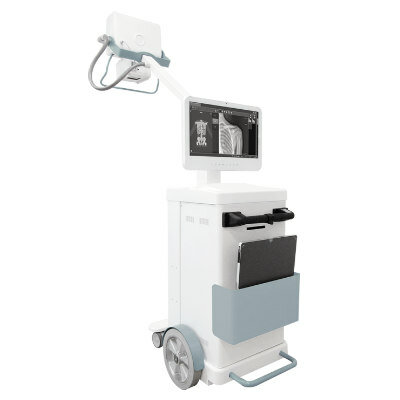AI Diagnoses Wrist Fractures As Well As Radiologists
|
By MedImaging International staff writers Posted on 04 Mar 2024 |

In the field of medical imaging, conventional radiography is the primary method for diagnosing wrist fractures. However, challenges such as suboptimal positioning, technique, patient cooperation, and interpretational errors, often stemming from clinician inexperience, fatigue, or poor viewing conditions, can impact the accuracy of these radiographs. The most frequent interpretational mistakes in emergency departments (EDs) are missed fractures, leading to treatment delays. Physicians, particularly those with limited training in musculoskeletal imaging, often struggle to identify wrist fractures, especially when the signs are subtle. The advancement of deep learning (DL) in automating wrist fracture diagnosis could significantly assist physicians, and recent developments have seen substantial improvements in DL models' image classification error rates. Now, a new meta-analysis reveals that artificial intelligence (AI) algorithms, especially convolutional neural networks (CNNs), are highly effective in detecting wrist fractures from plain X-rays, performing on par with trained healthcare professionals.
The study by researchers at the University Hospital of Southern Denmark (Odense, Denmark) involved analyzing various medical databases from January 2012 to March 2023. The team identified six studies that applied deep-learning AI for diagnosing radial and ulnar fractures using radiographs. The studies collectively included 33,026 X-ray images. Each study employed CNN models trained on a dataset of images and compared their diagnostic accuracy against healthcare experts specializing in fracture diagnostics. The focus on wrist fractures in this meta-analysis was due to their high rate of misdiagnosis in EDs, where their detection on X-rays can be complex.
A comprehensive review of these studies indicated that CNNs, when benchmarked against the consensus of healthcare experts, achieved a sensitivity rate of 92% and a specificity rate of 93%. This finding positions CNN as an effective preliminary tool for reviewing radiographs, potentially reducing missed fractures when followed up by a healthcare professional's examination. However, the study acknowledges the need for further research, emphasizing the importance of external dataset testing, uniform methodologies, and independent expert reference standards to fully ascertain the effectiveness of diagnostic AI algorithms. Future studies should also focus on patient outcomes as a reference point to understand the real-world impact of CNNs in clinical settings.
“For clinicians, AI could potentially be used to enhance diagnostic confidence, especially in fields of radiology. AI algorithms may be particularly useful for less experienced clinicians,” concluded the researchers.
Related Links:
University Hospital of Southern Denmark
Latest Radiography News
- Novel Breast Imaging System Proves As Effective As Mammography
- AI Assistance Improves Breast-Cancer Screening by Reducing False Positives
- AI Could Boost Clinical Adoption of Chest DDR
- 3D Mammography Almost Halves Breast Cancer Incidence between Two Screening Tests
- AI Model Predicts 5-Year Breast Cancer Risk from Mammograms
- Deep Learning Framework Detects Fractures in X-Ray Images With 99% Accuracy
- Direct AI-Based Medical X-Ray Imaging System a Paradigm-Shift from Conventional DR and CT
- Chest X-Ray AI Solution Automatically Identifies, Categorizes and Highlights Suspicious Areas
- Annual Mammography Beginning At 40 Cuts Breast Cancer Mortality By 42%
- 3D Human GPS Powered By Light Paves Way for Radiation-Free Minimally-Invasive Surgery
- Novel AI Technology to Revolutionize Cancer Detection in Dense Breasts
- AI Solution Provides Radiologists with 'Second Pair' Of Eyes to Detect Breast Cancers
- AI Helps General Radiologists Achieve Specialist-Level Performance in Interpreting Mammograms
- Novel Imaging Technique Could Transform Breast Cancer Detection
- Computer Program Combines AI and Heat-Imaging Technology for Early Breast Cancer Detection
- AI Outperforms Human Readers in Detecting Lung Nodules on X-Rays
Channels
MRI
view channel
PET/MRI Improves Diagnostic Accuracy for Prostate Cancer Patients
The Prostate Imaging Reporting and Data System (PI-RADS) is a five-point scale to assess potential prostate cancer in MR images. PI-RADS category 3 which offers an unclear suggestion of clinically significant... Read more
Next Generation MR-Guided Focused Ultrasound Ushers In Future of Incisionless Neurosurgery
Essential tremor, often called familial, idiopathic, or benign tremor, leads to uncontrollable shaking that significantly affects a person’s life. When traditional medications do not alleviate symptoms,... Read more
Two-Part MRI Scan Detects Prostate Cancer More Quickly without Compromising Diagnostic Quality
Prostate cancer ranks as the most prevalent cancer among men. Over the last decade, the introduction of MRI scans has significantly transformed the diagnosis process, marking the most substantial advancement... Read moreUltrasound
view channel
Deep Learning Advances Super-Resolution Ultrasound Imaging
Ultrasound localization microscopy (ULM) is an advanced imaging technique that offers high-resolution visualization of microvascular structures. It employs microbubbles, FDA-approved contrast agents, injected... Read more
Novel Ultrasound-Launched Targeted Nanoparticle Eliminates Biofilm and Bacterial Infection
Biofilms, formed by bacteria aggregating into dense communities for protection against harsh environmental conditions, are a significant contributor to various infectious diseases. Biofilms frequently... Read moreNuclear Medicine
view channel
New SPECT/CT Technique Could Change Imaging Practices and Increase Patient Access
The development of lead-212 (212Pb)-PSMA–based targeted alpha therapy (TAT) is garnering significant interest in treating patients with metastatic castration-resistant prostate cancer. The imaging of 212Pb,... Read moreNew Radiotheranostic System Detects and Treats Ovarian Cancer Noninvasively
Ovarian cancer is the most lethal gynecological cancer, with less than a 30% five-year survival rate for those diagnosed in late stages. Despite surgery and platinum-based chemotherapy being the standard... Read more
AI System Automatically and Reliably Detects Cardiac Amyloidosis Using Scintigraphy Imaging
Cardiac amyloidosis, a condition characterized by the buildup of abnormal protein deposits (amyloids) in the heart muscle, severely affects heart function and can lead to heart failure or death without... Read moreGeneral/Advanced Imaging
view channel
New AI Method Captures Uncertainty in Medical Images
In the field of biomedicine, segmentation is the process of annotating pixels from an important structure in medical images, such as organs or cells. Artificial Intelligence (AI) models are utilized to... Read more.jpg)
CT Coronary Angiography Reduces Need for Invasive Tests to Diagnose Coronary Artery Disease
Coronary artery disease (CAD), one of the leading causes of death worldwide, involves the narrowing of coronary arteries due to atherosclerosis, resulting in insufficient blood flow to the heart muscle.... Read more
Novel Blood Test Could Reduce Need for PET Imaging of Patients with Alzheimer’s
Alzheimer's disease (AD), a condition marked by cognitive decline and the presence of beta-amyloid (Aβ) plaques and neurofibrillary tangles in the brain, poses diagnostic challenges. Amyloid positron emission... Read more.jpg)
CT-Based Deep Learning Algorithm Accurately Differentiates Benign From Malignant Vertebral Fractures
The rise in the aging population is expected to result in a corresponding increase in the prevalence of vertebral fractures which can cause back pain or neurologic compromise, leading to impaired function... Read moreImaging IT
view channel
New Google Cloud Medical Imaging Suite Makes Imaging Healthcare Data More Accessible
Medical imaging is a critical tool used to diagnose patients, and there are billions of medical images scanned globally each year. Imaging data accounts for about 90% of all healthcare data1 and, until... Read more
Global AI in Medical Diagnostics Market to Be Driven by Demand for Image Recognition in Radiology
The global artificial intelligence (AI) in medical diagnostics market is expanding with early disease detection being one of its key applications and image recognition becoming a compelling consumer proposition... Read moreIndustry News
view channel
Bayer and Google Partner on New AI Product for Radiologists
Medical imaging data comprises around 90% of all healthcare data, and it is a highly complex and rich clinical data modality and serves as a vital tool for diagnosing patients. Each year, billions of medical... Read more



















